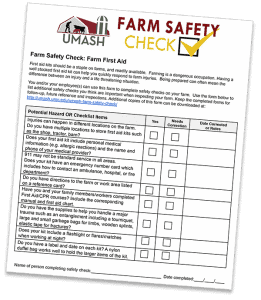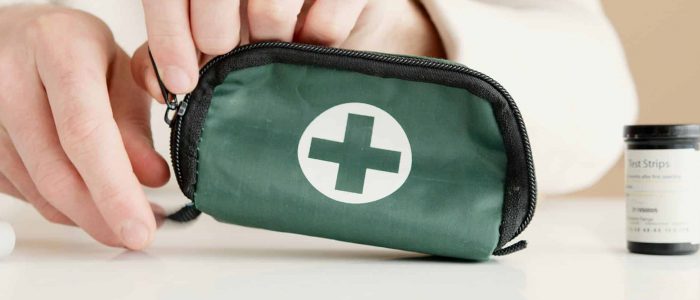NOVEMBER 2021
Do you have a first aid kit?
Do you know where it is?
Is it stocked and ready for use?
First aid kits should be a staple for farm families and workers and readily available. Farming is a dangerous occupation. Having a well stocked first aid kit can help you quickly respond to farm injuries. Being prepared can often mean the difference between an injury and a life threatening situation.
Farm-related injuries vary from farm to farm. The overall three most common hazards include livestock, machinery, and slips, trips and falls. A farm covers a lot of space and equipment, so consider having more than one first aid kit placed in various locations such as tractors, a livestock barn, and your vehicle.
Take the next step and locate your first aid kit or kits and make sure it meets your farm needs.
To assist farmers in the Upper Midwest, UMASH has compiled a variety of resources with information on preparing first aid kits.
Build a Basic First Aid Kit
Prepared by Charles Schwab, extension safety specialist with Iowa State University, and Carolyn Sheridan, registered nurse. 06/2017

FARM SAFETY CHECK
FARM FIRST AID
The FIRST step in First Aid is being prepared! Having well stocked and easily accessible first aid kits can help you quickly respond to farm injuries.
Take a moment to review this UMASH Farm Safety Check to make sure you are prepared.
Additional First Aid Resources






